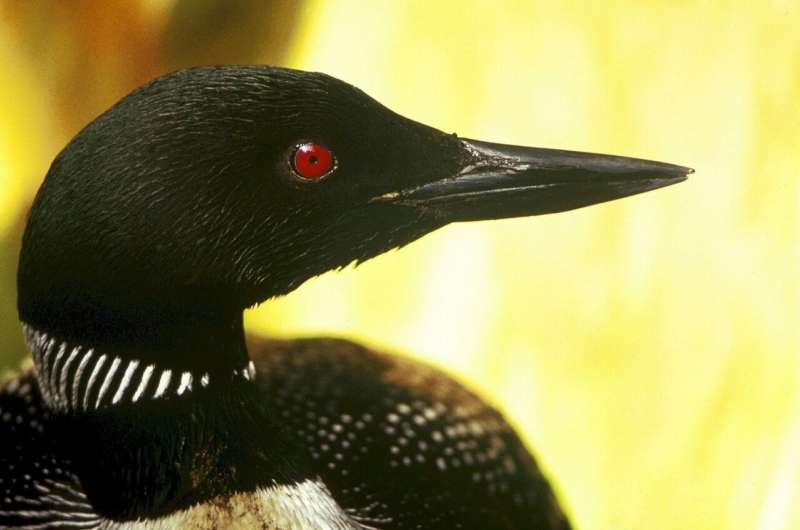Loons likely to disappear from Minnesota due to climate change, new report warns

Minnesota could lose its beloved state bird in coming decades if humans don't stall climate change and prevent the common loon from shifting north.
The black and white bird—whose haunting cries define Minnesota as much as lakes, snow and hot dish—is among 55 species likely to disappear from the state for the summer by 2080 if the world does nothing to cut greenhouse-gas emissions, according to a new report by the National Audubon Society, Survival by Degrees: 389 Bird Species on the Brink.
Minnesota is one of the country's fastest-warming states, largely because of its northern location and warming winters. Even if humans stall global warming at 1.5 degrees Celsius (2.7 degrees Fahrenheit), several bird species in Minnesota remain threatened, including the trumpeter swan, the spruce grouse and the black-throated green warbler. An increase of 2.7 degrees Fahrenheit is the threshold set by climate scientists to prevent the worst impacts of warming.
"If you like birds, your experience of nature will change," said Luis Ramirez, Audubon's director of conservation for the Upper Mississippi River Flyway.
Even though loons are fairly adaptable, rising temperatures will make Minnesota less hospitable as their summer home. Warming lakes and more frequent algae blooms put stress on the fish communities that loons rely on for food. And as Minnesota gets more rain, rising water levels in lakes and wetlands choke out the marshy areas where loons like to build their nests. As the food and habitat change, the birds will migrate farther north, the Audubon researchers predicted.
The report's overall conclusion: Two-thirds of 604 North American bird species face possible extinction as the Earth's temperatures rise, although the worst can be avoided if people cut carbon emissions and other heat-trapping greenhouse gases in the atmosphere.
Audubon's analysis echoes a startling Cornell University study published last month in Science magazine showing that 3 billion North American birds have vanished since 1970.
Audubon researchers reviewed studies on 604 North American bird species and modeled how their ranges would shift if the climate warms, in Celsius, by 1.5 degrees, 2 degrees and 3 degrees. The work builds on an earlier Audubon report in 2014.
Loons may be the most celebrated of Minnesota's winged creatures, but they are not the birds most vulnerable to climate change. Boreal species such as warblers and chickadees will suffer greater effects because they are specialists and less adaptable to changes in temperature and habitat, Ramirez said—like humans who are picky about their food and sleeping arrangements.
Beyond cutting carbon emissions, the report said, there are small things people can do to help. Planting less manicured lawn and more native grasses, flowers, shrubs and trees provides better bird habitat, for example.
"Minnesota has been doing a lot of good work in habitat restoration over the last 10 years," since the state's Legacy Amendment began funding projects across the state, Ramirez said.
Bob Dunlap, a zoologist with the state Department of Natural Resources (DNR), said many of the birds cited as most vulnerable in the study have already been identified as having the greatest conservation needs under the state's federally mandated Wildlife Action Plan. That means they are a priority species for the DNR, which surveys them and tries to manage them, among other things.
Dunlap called the Audubon report an important reminder: "It's time to do something about this," he said.
At the moment, the DNR does not detect a declining trend in Minnesota's loon population. The state's 1989 census showed about 12,000 breeding pairs across the state, and that appears to have remained stable, said Krista Larson, a DNR nongame research biologist who coordinates the state's loon monitoring program.
"The good news is that we're not detecting any problems at this point," she said.
Journal information: Science
©2019 Star Tribune (Minneapolis)
Distributed by Tribune Content Agency, LLC.


















